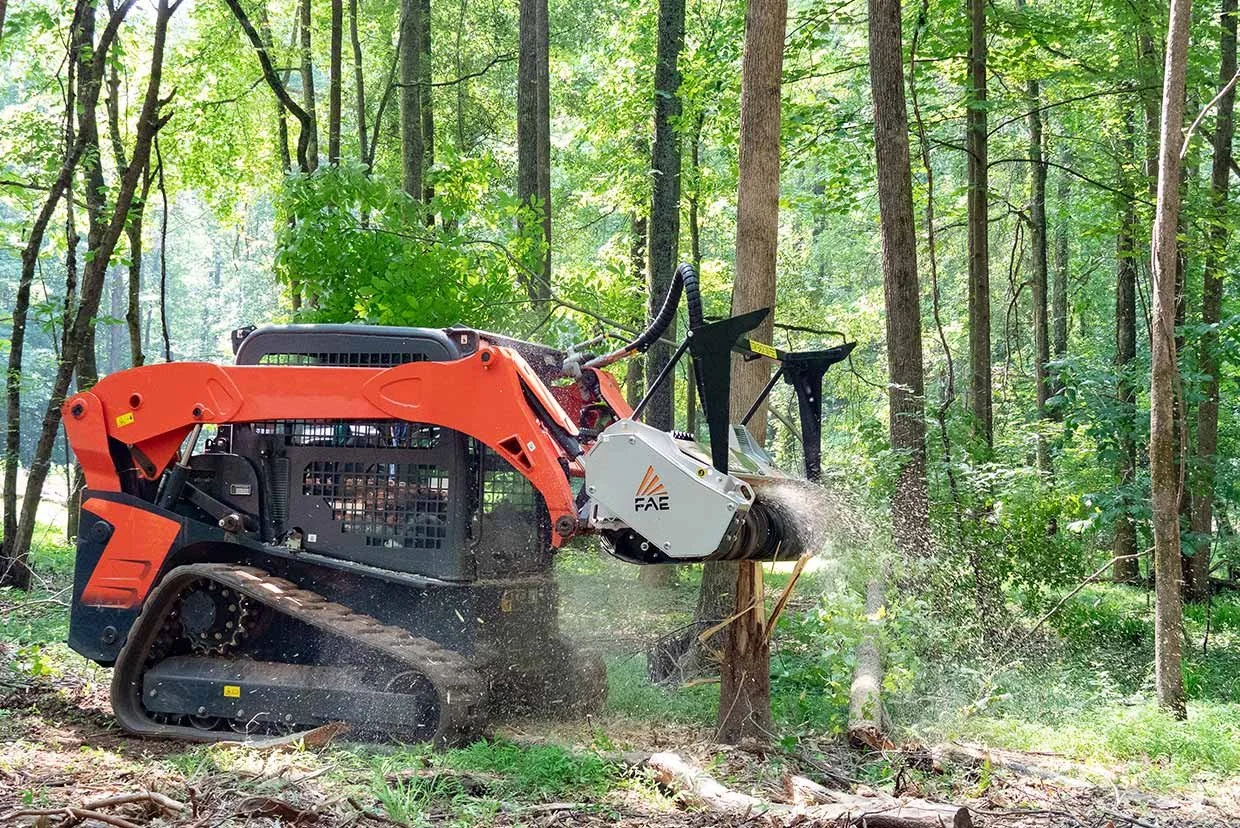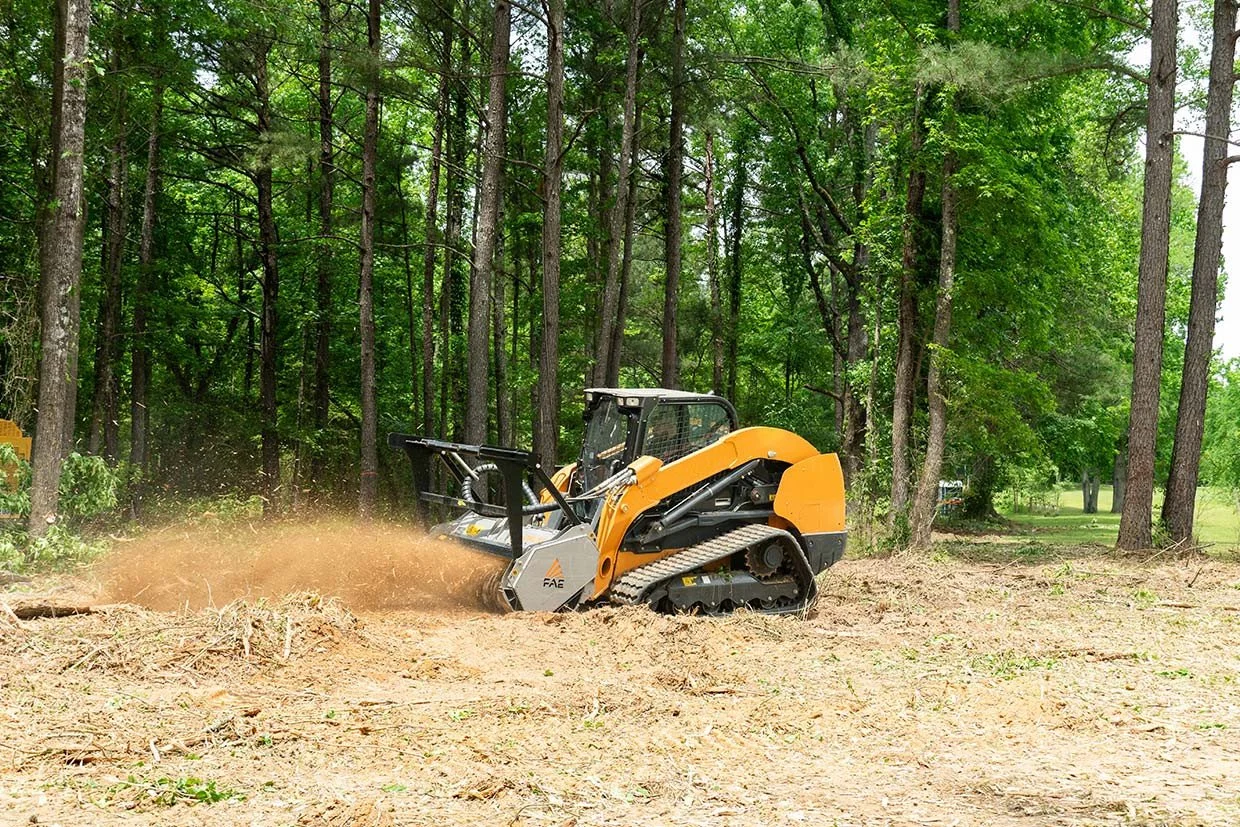Size Matters: How Skid Steer Class and Hydraulics Drive Land-Clearing Outcomes
If you’re tackling land clearing, choosing the right skid steer is about more than horsepower. The machine size, weight class, hydraulic flow, and maneuverability all shape which attachments will perform best—and which ones won’t fit at all. In this guide, we’ll walk through how different skid-steer sizes influence your attachment options, with concrete examples from two popular lines: FAE mulchers and Quick Attach mowers (including the EZ Mow and other mowing attachments). By the end, you’ll have a practical framework for selecting a skid steer that maximizes productivity, safety, and return on investment on your land-clearing projects.
Start with the scale of your site and the density of vegetation
Small-to-medium sites (yards, small clearings, city lots)
Consider compact or mid-size skid steers in the 2,500–6,000 lb rating. These machines offer a tight turning radius, good ground clearance, and ample hydraulic flow for lighter mulching and mowing attachments.
Attachment fit: You can run lighter-duty mulchers (e.g., smaller FAE units with Bite Limiter rotors) and compact mowing heads (such as Quick Attach EZ Mow or similar low-profile mower heads) to handle brush, tall grasses, and light undergrowth without excessive weight.
Large sites or tough terrain (forested lots, utility corridors, ranches)
Heavier skid steers in the 9,000–12,000+ lb class bring higher hydraulic flow, greater breakout force, and enough mass to stabilize implements when in aggressive cutting modes.
Attachment fit: You’ll have access to larger FAE mulchers (e.g., UML/SSL) and bigger Quick Attach mowing heads like the Mega Mower. These deliver higher productivity when dealing with dense brush, small trees, or heavy debris.
Understand hydraulic flow and power at your disposal
Low-to-mid flow machines (roughly 15–30 GPM)
Many mowing attachments and compact mulchers run quite well on moderate flow, but performance will cap out with dense vegetation or larger diameter material.
Choose attachments designed for lower flow or with optimized hydraulic circuits. For example, lighter-duty Quick Attach mowers and smaller FAE mulchers like the BL1/SSL can maintain solid performance without overburdening the hydraulic system.
High-flow machines (above ~30 GPM, often 40+ GPM)
High-flow capability unlocks maximum performance from brush cutters and mulchers. You can run larger FAE units (like UML/SSL) and bigger mowing heads (Mega Mower X) with aggressive cutting power.
Expect faster cycle times, cleaner cuts, and the ability to process denser material in fewer passes.
Matching weight, counterbalance, and stability to the task
Weight limitations: Each skid steer has a maximum lift capacity and a tipping load. Attaching a heavy mulcher or mower affects stability, trailering, and load limits on booms.
Ballast strategy: Heavier machines can carry bigger attachments without sacrificing control. For lighter machines, you’ll want lighter mulchers or mowing heads that won’t overwhelm the frame or hydraulics.
Ground impact: On uneven terrain, a heavier machine with a robust attachment can help maintain grade and avoid stalling or bog-down, but it also increases soil compaction and fuel use. Plan a work sequence and equipment combination that minimizes repeated passes.
Attachment-specific considerations: FAE mulchers and Quick Attach mowers as examples
FAE mulchers (Bite Limiter rotors vs. Open rotors)
Bite Limiter rotors are typically better on dense vegetation and smaller diameter material. If you’re on a compact skid steer, a Bite Limiter rotor may deliver smoother performance with less clumping, especially in higher-flow machines.
Open rotors move more material and can manage larger debris, but may require more hydraulic power and a sturdier machine to prevent bog-down. In a larger skid steer with high flow, Open rotors shine on open sites with lighter density vegetation but bigger volume.
Pickup point: For sites with mixed densities, pairing a mid-to-high flow skid steer with a versatile FAE mulcher (by customizing teeth options on the rotor) can maximize uptime.
Quick Attach mowers (EZ Mow and related brush mowers)
Smaller, low-profile mowing heads pair well with compact to mid-size skid steers for trail maintenance, roadside work, and property grounds management.
Larger Quick Attach mowing heads require heftier machines to maintain controllability and minimize pilot fatigue, especially in sloped terrain or long days of mowing.
Consider load distribution: Mower heads primarily cut vegetation; ensure your skid steer’s hydraulic capacity is sufficient to drive the head at the needed RPM without starving other hydraulic functions.
Practical decision framework: a quick checklist
Site size and vegetation density
Small/medium site + dense brush: go mid-size skid steer with Bite Limiter mulcher or a compact mowing head.
Large site + varied density: choose a heavier skid steer with high-flow to run a larger mulcher (open rotor option) or a robust Quick Attach mower.
Hydraulic flow and system pressure
Confirm GPM and PSI of your machine’s hydraulic system. Match the attachment’s required inputs. If in doubt, consult the attachment’s spec sheet or a dealer.
Weight and stability
Ensure the chosen attachment’s weight plus the machine’s lift capacity won’t exceed recommended limits. Account for ballast and ballast management.
Attachments availability and versatility
If you anticipate switching tasks often (clearing, mowing, debris removal), invest in a machine that can comfortably handle multiple attachment types or provide quick-attach versatility to minimize downtime.
Real-world scenarios to illustrate the choice
Scenario A: A small rural property with dense blackberry brambles and saplings
Machine: 5,000–7,000 lb skid steer, moderate-high flow
Attachments: FAE mulcher with Bite Limiter rotor or a mid-size Quick Attach mower
Reasoning: Dense vegetation benefits from rotor control and manageable flow, yet still needs mobility for tight spaces.
Scenario B: A municipal right-of-way project with mixed brush and small trees
Machine: 9,000–12,000 lb skid steer, high flow
Attachments: Larger FAE mulcher (Open rotor for speed) plus a larger Quick Attach mowing head for edge work
Reasoning: Scale and density require high productivity and robust hydraulics; the combination reduces cycles and improves consistency.
Scenario C: A residential landscape renovation with cleanup and trail maintenance
Machine: Compact skid steer around 3,500–4,500 lb, mid-flow
Attachments: EZ Mow or similar low-profile mower for lawn edges, plus a smaller mulcher for undergrowth
Reasoning: Lightweight machine, versatile attachments, and manageable fuel consumption.
Budget, maintenance, and lifecycle considerations
Upfront costs vs. long-term ROI: A bigger machine can do more, faster, but at higher upfront and operating costs. Weigh planned workload, maintenance, and expected project throughput.
Versatility and downtime: A skid steer that can swap attachments quickly reduces downtime, improving utilization.
Spare parts and serviceability: Choose machines and attachments with accessible service networks and readily available parts to reduce downtime.
Conclusion
Choosing the right skid steer for land clearing isn’t just about horsepower. It’s about matching machine size, hydraulic capability, and stability to the job at hand, and selecting attachments that maximize your site’s productivity without compromising safety or budget. By thinking through site size, vegetation density, hydraulic flow, and attachment compatibility—and using FAE mulchers and Quick Attach mowers as practical reference points—you’ll be well on your way to a land clearing setup that’s efficient, safe, and cost-effective.





